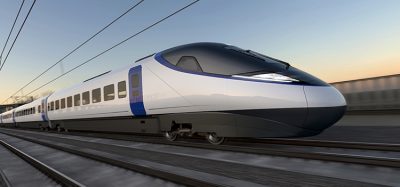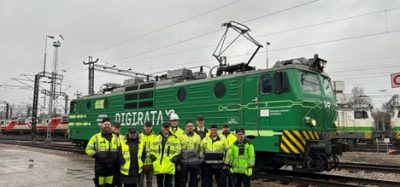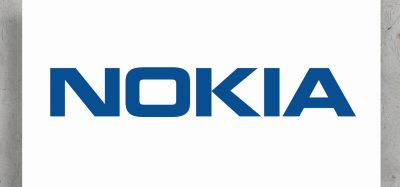GSM-R in 2009 – international operations take off
Posted: 28 January 2010 | | No comments yet
Over the last few years, the UIC has written many updates about the GSM-R situation in Europe for Global Railway Review and 2009 was a good year for GSM-R, despite the overall difficult economic environment. Finland is the latest country who has changed its colour on the UIC GSM-R implementation map. Finland finalised its implementation (4,970km covered with GSM-R, out of a total length of 5,820km; 300km are prepared for ETCS coverage). The total network migration to GSM-R is targeted for December 2010.
Over the last few years, the UIC has written many updates about the GSM-R situation in Europe for Global Railway Review and 2009 was a good year for GSM-R, despite the overall difficult economic environment. Finland is the latest country who has changed its colour on the UIC GSM-R implementation map. Finland finalised its implementation (4,970km covered with GSM-R, out of a total length of 5,820km; 300km are prepared for ETCS coverage). The total network migration to GSM-R is targeted for December 2010.
Over the last few years, the UIC has written many updates about the GSM-R situation in Europe for Global Railway Review and 2009 was a good year for GSM-R, despite the overall difficult economic environment.
Finland is the latest country who has changed its colour on the UIC GSM-R implementation map. Finland finalised its implementation (4,970km covered with GSM-R, out of a total length of 5,820km; 300km are prepared for ETCS coverage). The total network migration to GSM-R is targeted for December 2010.
In Europe, GSM-R is reported to be operational on 65,800km (source – ERIG), 79,300km have already been built. As 150,650km of rail are planned to be equipped in Europe, 43% of it is already in operation.
Different implementation stages, from feasibility studies to migrated GSM-R can be seen in the map in Figure 1.


Figure 1 (Copyright: UIC 2009, Source: ERIM/ERTMS Database)
Table 1 gives you a closer outlook on the national implementation plans, while Table 2 illustrates the implementation stage in Europe.
The number of activated handhelds recorded a slight increase – 108,050 handhelds (GPH, OPH and OPS), an additional 34,900 Cab Radios and 1,242 EDOR (ETCS Data Only Cab Radio) are now activated. More than 5,000 Dispatcher terminals are using the GSM-R networks.


Table 1: GSM-R Planning in Europe
Today, GSM-R operators are increasingly focusing on the better usage of network capabilities. Therefore, applications are under study in each administration, bringing with it a smoother operation and better satisfaction for the users.
In addition, a constant growth in the GSM-R international operations traffic figures has been registered. Although the average figures are low (as Graph 1 shows), the growing trend and the links occupancy figures highlight that GSM-R – an ERTMS pylon – is fulfilling one of its main tasks; that is to ensure harmonised international communications.
Direct interconnections, shown in Figure 2, are continuing to ensure international traffic and to form the basis of a future European railways telecommunication network.


Figure 2: Direct interconnections
As a consequence, the GSM-R Network Operators, and members of the UIC GSM-R Networks Management Group, have decided to jointly sign a GSM-R Transit Routing Agreement, which would harmonise the Transit Routing rules. This Agreement does not supersede the bilateral agreements. The document was signed last December by DB Netz and JBV; the signatures of the GSM-R operators will be finalised by the end of Q1 2010.
It is obvious that international operations are taking off. In order to keep these improvements running, there is still work to be done. To follow are some of the most important issues explained in detail.
Frequency interferences
GSM-R, by its nature, can co-exist with GSM (basically being a GSM 2+ technology). This was the concept in early 1990. Nowadays, public telecommunications are orienting on data transfers.
New technologies are in place – 3G (UMTS), while 4G, most probable LTE – are knocking on the door. Lately, due to the frequencies reforming policy, licenses have been granted in E-GSM bandwidth, near GSM-R (see Figure 2). UMTS900, and soon LTE900, are becoming a reality. These technologies are a real danger for GSM-R, since out of band emissions as well as too strong signals are interfering with the GSM-R Cab Radios, which are very sensitive mobile stations with 4m high antennas.
Several actions have been launched at several levels and investigations on the issue cause (UMTS900 Specifications, GSM-R Cab Radios or bad implementations) are under study. Based on the results, solutions will be defined (filters – both sides, better radio modules, etc), and guidelines for cohabitation between the Public Operators and the railways will be prepared. Railways are present and active in all relevant working groups to bring up-to-date information, and to defend user interests.
GSM-R additional frequencies
Good news! Additional frequencies are now possible to be obtained in the so-called PMR/PAMR Bandwidth (see Figure 2). After a long process, ECC have allowed GSM-R as one of the users of the PMR/PAMR bandwidth since the middle of 2009 (see Figure 3).


Figure 3: Frequency Spectrum Occupancy
It is important to point out that these frequencies are not obtained in a harmonised way, due to different stages of GSM-R implementations. Up to 3 MHz paired can be requested by individual railways. Interoperable applications (Train Radio, ETCS), cannot use these frequencies. DB Netz has already applied for such supplementary frequencies that will be used majorly for shunting.
We are well aware that these additional frequencies will need a product development for this range, but for national applications in a first instance, this activity would bring advantages to railways which are well advanced and use the existing frequencies extensively.


Table 2: European Implementation Stage
GPRS for ETCS
GSM-R is the bearer for ETCS. The actual specifications only enable the use of the obsolete Circuit Switched transmission mode, which is safe, yet consumes too many frequency resources – any train equipped with an active ETCS application in Level 2 or higher uses one channel for the data transmission permanently along the whole trip. IP technologies, which mean packet switched transmission mode, would allow up to seven users on the same frequency channel.
GPRS has been identified as the cheapest and fastest solution. It is also one of the simplest digital wireless transmission technologies, which means that if GPRS is good enough, EDGE, UMTS, LTE or others would easily fulfill the requirements. Most of the railways implementing GSM-R have already ordered GPRS to be implemented in their network. Some already have applications using it.
In 2009, tests were performed as a first step of the GPRS for ETCS Feasibility Study in Belgium and Italy – both in lab and on-track conditions. Encouraging results were obtained; GPRS was proven to be fast, and even if some slops were registered, packets were not lost, and the round trip delay showed a fulfillment of Subset 093 transmission delay conditions, in ICMP protocol – ping tests conditions.
Tests performed on the Milano-Bologna High-Speed Line showed a loss in registered packets. Four users in ICMP conditions were able to share a single frequency channel with good delay results, in a continuous transmitting traffic model (lab test conditions).
It is important to point out that a similar way as from GSM to GSM-R has to be avoided; the intention is clear to use a standard GPRS.
The final phase for the feasibility study will be to test GPRS in ‘ETCS-like’ conditions, respecting a traffic model agreed within UNISIG. Tests are scheduled for January to February 2010, in Sweden.
This feasibility is targeted to be finalised by the end of March 2010. UNISIG committed to specify a Packet Switch solution on a reasonable period of time after receiving results that prove that GPRS is suitable for ETCS. It is extremely important to define a Euro Radio interface that is technologically independent, in such a way that the change of technology won’t imply other changes for ETCS, except the transmission interfaces.
What’s next in 2010?
In 2010, results are expected in the Frequency Interferences issue; work on specifying packet switch solution for ETCS will start. A new EIRENE maintenance version – FRS 7.1 and SRS 15.1 – will be in place by Q2 2010, integrating several applications, for instance, revised GSM-R Shunting, all with an optional status, therefore not touching the interoperability.
GSM-R is proven to also work in international operation conditions, and the constant improvements being achieved will make it even more suitable for the increasing railways communications demands.


Dan Mandoc
About the author
After graduating from the ‘Transylvania’ University in Brasov, Romania in 1992, Mr. Dan Mandoc has worked in different positions at Romanian Railways. Between 2002 and 2004, he was Head of the Digital Management Centre for the Romanian Railways Telecom Network. From 2007, he has been working within the UIC (International Union of the Railways), as Senior Advisor for GSM-R & Telecom. In June 2009, he took over the role as Chairman of the European Railway Radio Implementation Group – ERIG. He is the UIC ERTMS/GSM-R Project Manager.
Issue
Related topics
European Rail Traffic Management System (ERTMS), Global System for Mobile Communications – Railway (GSM-R)







